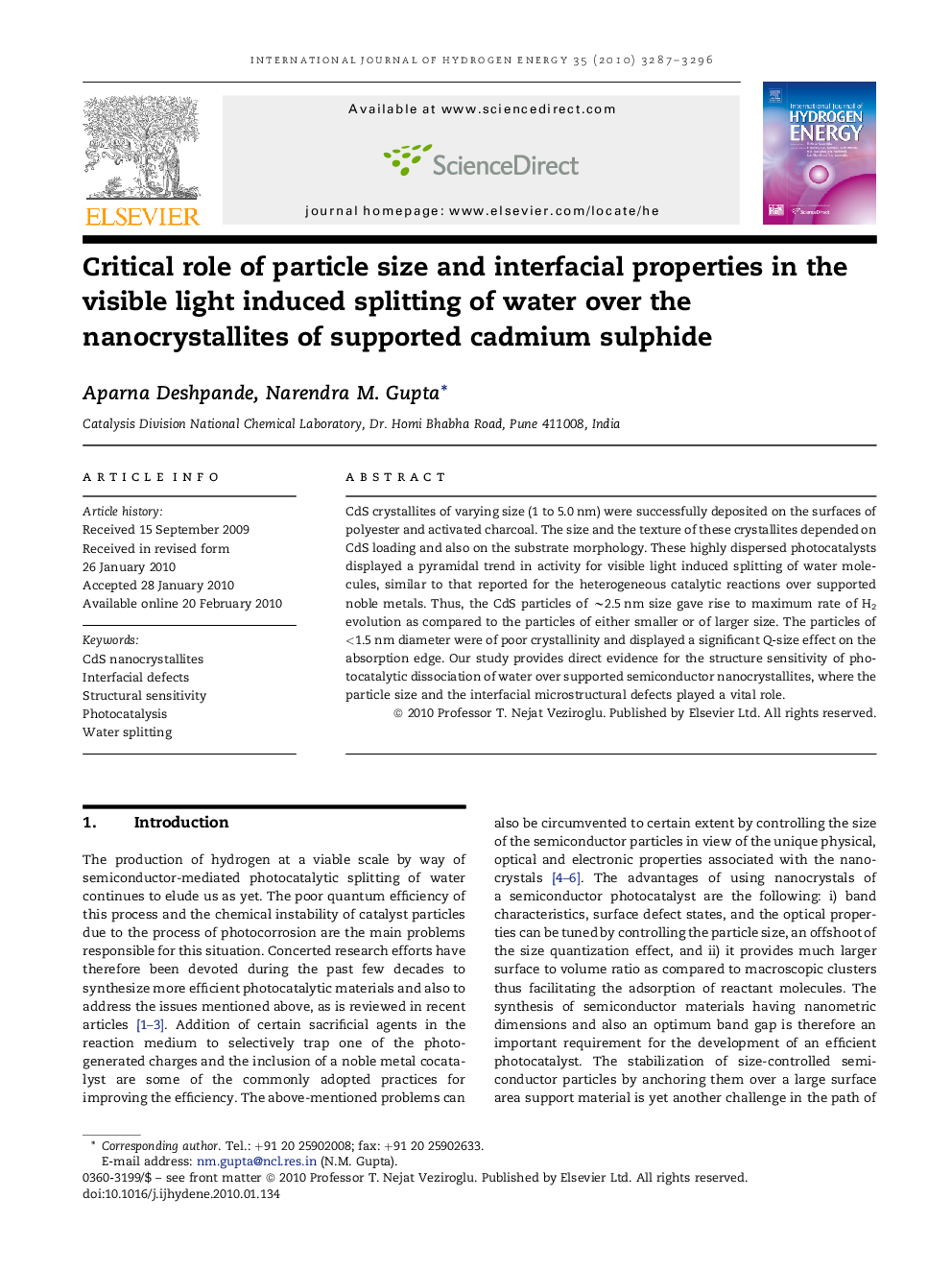| Article ID | Journal | Published Year | Pages | File Type |
|---|---|---|---|---|
| 1282882 | International Journal of Hydrogen Energy | 2010 | 10 Pages |
CdS crystallites of varying size (1 to 5.0 nm) were successfully deposited on the surfaces of polyester and activated charcoal. The size and the texture of these crystallites depended on CdS loading and also on the substrate morphology. These highly dispersed photocatalysts displayed a pyramidal trend in activity for visible light induced splitting of water molecules, similar to that reported for the heterogeneous catalytic reactions over supported noble metals. Thus, the CdS particles of ∼2.5 nm size gave rise to maximum rate of H2 evolution as compared to the particles of either smaller or of larger size. The particles of <1.5 nm diameter were of poor crystallinity and displayed a significant Q-size effect on the absorption edge. Our study provides direct evidence for the structure sensitivity of photocatalytic dissociation of water over supported semiconductor nanocrystallites, where the particle size and the interfacial microstructural defects played a vital role.
